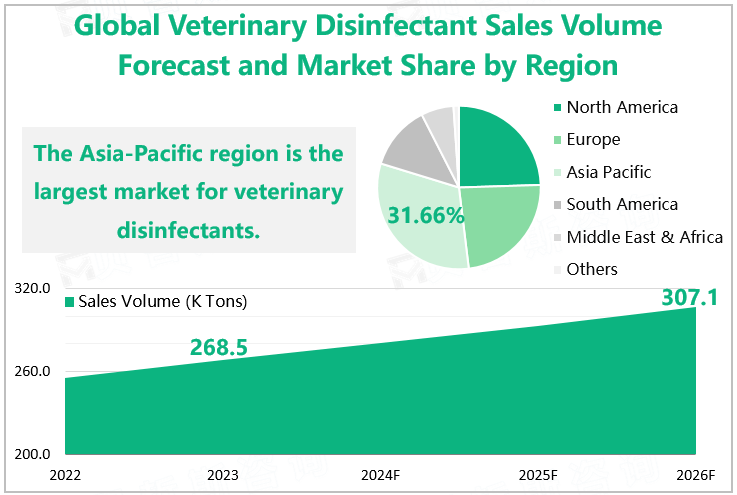Veterinary disinfectants are chemical preparations specifically designed to kill or remove pathogenic microorganisms in animal environments. These pathogenic microorganisms may exist on the surface of animal bodies, livestock and poultry houses, equipment, vehicles, and other corners, posing a threat to animal health. The main purpose of veterinary disinfectants is to cut off the transmission routes of infectious diseases, control the outbreak of infectious diseases, and ensure the health of animal populations.
Introduction to Segmented Product Types
|
Halogen disinfectants |
Including sodium hypochlorite, bleaching powder, etc. This type of disinfectant has strong oxidizing properties and can quickly kill various pathogenic microorganisms, but it is highly irritating to the environment and users. |
|
Phenolic disinfectants |
Such as carbonic acid, Saponated Cresol Solution, etc. This type of disinfectant has a certain killing effect on bacterial propagules, fungi, and viruses, but its effect on spores is not satisfactory. |
|
Aldehyde disinfectants |
Such as formaldehyde, glutaraldehyde, etc. This type of disinfectant has a good killing effect on bacteria, viruses, and spores, but it is highly irritating, so ventilation is necessary when using it. |
|
Surfactant-based disinfectants |
Such as Chlorhexidine, Bromo Geramine, etc. These disinfectants mainly kill pathogenic microorganisms by changing the permeability of microbial cell membranes and are effective against Gram-positive bacteria and some Gram-negative bacteria. |
|
Peroxide disinfectants |
Such as peroxyacetic acid, hydrogen peroxide, etc. This type of disinfectant has strong oxidizing properties and can quickly kill various pathogenic microorganisms, but it is highly irritating to the environment and users. |
Source: www.globalmarketmonitor.com

We provide more professional and intelligent market reports to complement your business decisions.